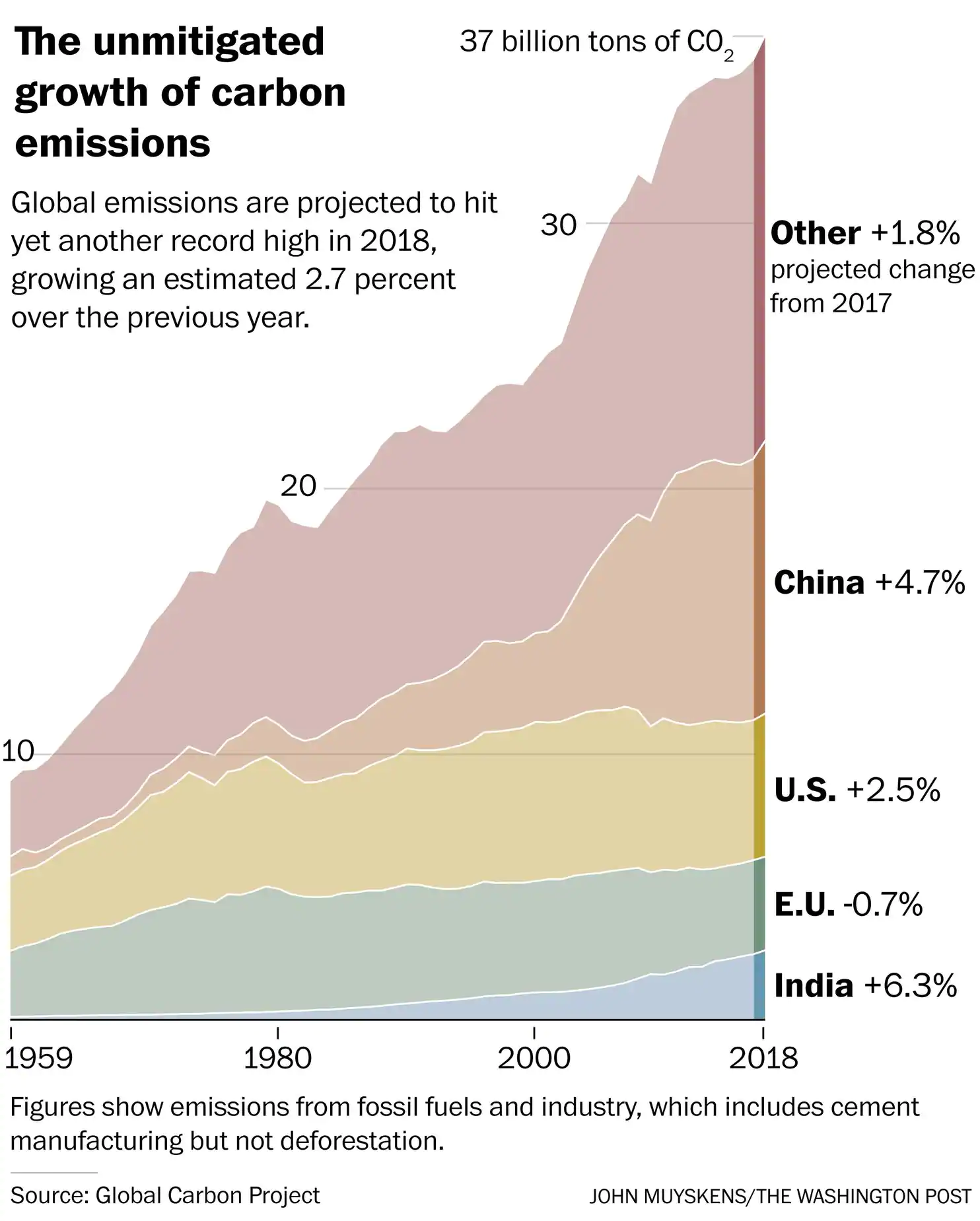This week saw the follow-on meeting to the Paris Climate Accord. The news is not good; or, as the Washington Post put it, “We are in trouble.” But at least the facts are clear. The Global Carbon Project reported that carbon emission levels are not only growing (this year, 1.6 percent), they’re expected to jump another 2.7 percent, to 37.1 billion tons in 2019.

Building a shared vision
Which brings me to a conversation among three brilliant scientists. Held during the Texas Tribune’s always-fascinating TribFest and sponsored by BP, an early champion of carbon reduction. The panel included:
- Jason Bordoff, formerly the senior director for energy and climate change at the NSA (yes, climate change impacts national security in a big way), now at Columbia
- Katharine Hayhoe, the director of the Climate Science Center at Texas Tech.
- Michael Webber, the Webber Energy Group, soon to be scientific and technical director at the French energy powerhouse ENGIE, on leave from the University of Texas at Austin
Embracing both energy and climate
The consensus: Effective climate change policy has to grounded in a shared vision in terms of food, jobs and opportunity. It must embrace both climate and energy. As Hayhoe pointed out, it starts with a simple question: What do you care about?
“The only reason we care about climate is because it affects things we already care about. It’s not an environmental issue; it’s a human issue. This is why I care about a changing climate, because it exacerbates our greatest humanitarian challenges: poverty, hunger, inequality, and more.” @KHayhoe
Epic droughts punctuated by Biblical Floods
Texas is among the fastest-growing states in the country and number one in terms of climate vulnerability. Thanks to the EPA’s rolling back restrictive guidelines, drilling is booming along the Gulf Coast, one of the nation’s most environmentally vulnerable regions. Houston, at the epicenter of drilling activity is still recovering from the most expensive ($125 billion and counting) hurricanes in history.

The most frightening trait of climate change is its pace: 50 percent faster than the rate of at which its been historically measured. Are we too late?
Leadership matters
Final note: I attended the session thanks to an invitation from Paula Barnett-Bulcao, BP’s senior director of government relations and public affairs. I’ve admired BP for years for their vision and willingness to wear a white hat in an industry known for climate degradation. Barnett, who’s been with BP for 16 years, told me that when she was starting out in the industry, BP was the company she knew she wanted to work for. High praise.
